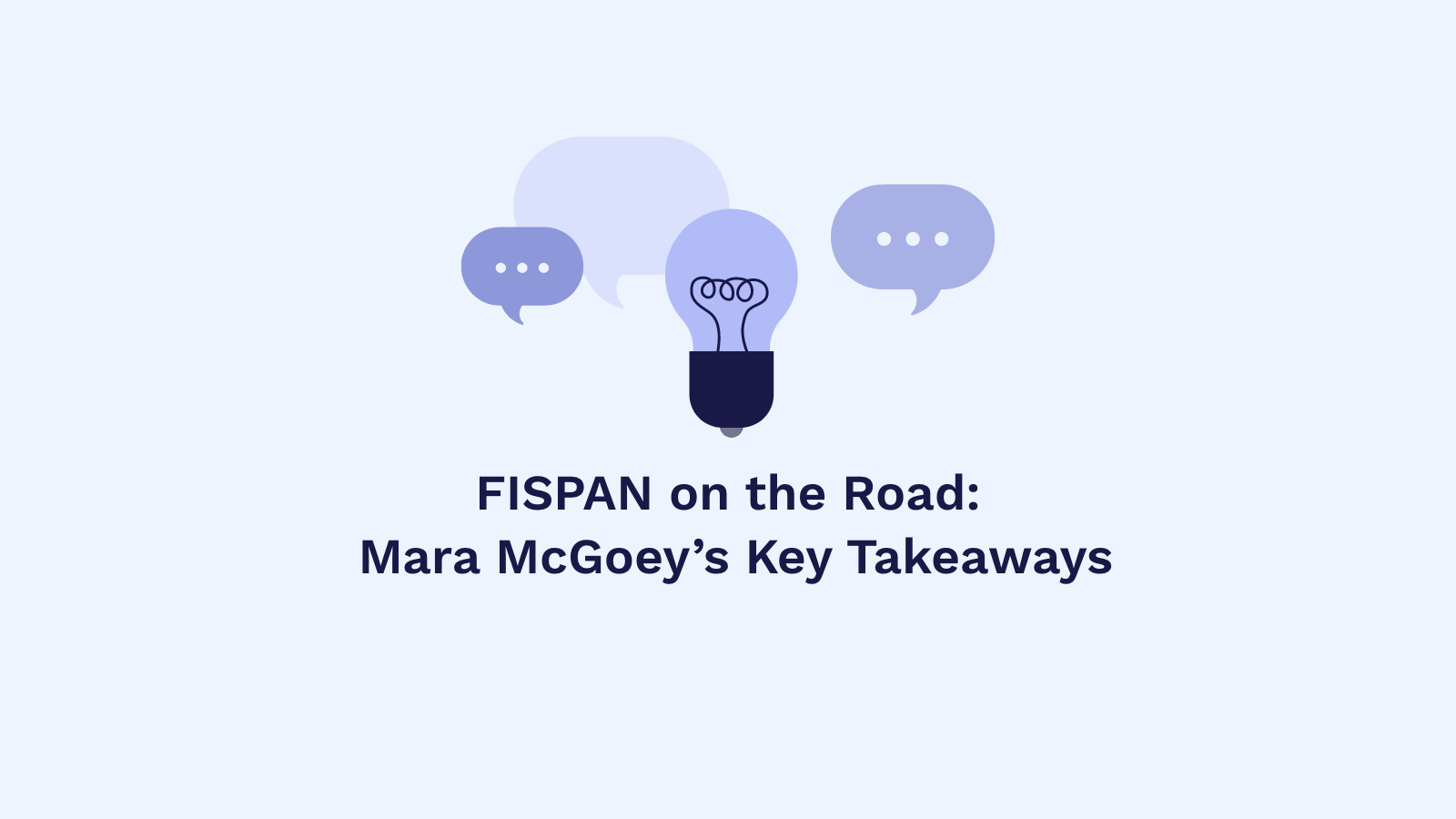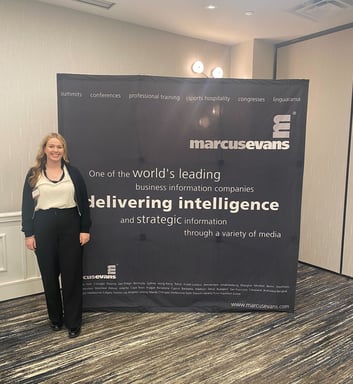
FISPAN on the Road: Mara McGoey’s Key Takeaways
On June 23 & 24, FISPAN’s Business Development Manager, Mara McGoey was found in Chicago at the premier Marcus Evans Open Finance, APIs, & Partnerships two-day conference. Bringing together leaders in Open Banking and Digital Innovation, the event explored opportunities enabled by Open Finance, including how strategic partnerships can accelerate open API initiatives. The two-day event was an excellent opportunity to connect with others in the industry and discuss all things Open Banking.

FISPAN’s Mara McGoey attended the premier Marcus Evans event from June 23-24, 2022
Following the action-packed conference, Mara McGoey shared her key takeaways from the event:
Mara’s Key Takeaways:
1. Open Finance is Here...
… And it’s not going anywhere. Open Finance is changing the way everyone interacts with money. Open Finance relates to the authorized sharing of an individual’s financial data between financial institutions and third parties. While the sharing of customer data may seem daunting, it enables consumers to have more control over their data, in turn leading to enhanced banking and customer experiences.
2. FinTechs are Friends, Not Foes
They’re not just a trend – FinTechs are here to stay. Unlike banks, FinTechs are specialized to handle the complexities, financial, and legal requirements that could arise when developing external capabilities. Over deep discussions with peers, some felt that when banks partner with FinTechs, a host of benefits are enabled, including: giving customers data-driven experiences that allow for greater personalization and products, increased wallet share, being able to keep clients in bank channels, and improved customer retention by creating stickier experiences.
Speaking at the event, Chief Digital Officer and Executive Vice President Alejandro (Alex) Carriles of Simmons Bank, responded to the Buy vs. Build dilemma, offering a solution for both. When considering whether to build or buy, teams need to pick the two elements that are most important to their strategy: time, cost, resources, or complexity. While there are pros and cons to both building and buying, a mix of both can be the key to a successful strategy. In partnering with the right FinTech, financial institutions can build, buy, and customize to make it their own while bridging internal knowledge gaps.
 FinTechs who were previously viewed as a threat to banks are now the key to staying ahead in the competitive financial landscape. Partnerships with FinTechs offer a quicker and more streamlined means for financial institutions to bring new products to market. Collaboration between both parties enables banks to go beyond simple monetization strategies, focus on their own core competencies, and unlock more revenue-achieving activities.
FinTechs who were previously viewed as a threat to banks are now the key to staying ahead in the competitive financial landscape. Partnerships with FinTechs offer a quicker and more streamlined means for financial institutions to bring new products to market. Collaboration between both parties enables banks to go beyond simple monetization strategies, focus on their own core competencies, and unlock more revenue-achieving activities.
Banks who embrace FinTech partnerships gain access to a range of benefits:
- Faster development timelines
- Increased capacity to innovate
- Access to industry expertise
- Outsourced client and product servicing
- Overall accelerated time to market
When choosing a FinTech to support your team, it’s important to ensure the partnership aligns with your corporate strategy and is mutually beneficial for both parties. By acting on an enterprise-wide governance model to increase team alignment, banks can achieve greater success in their partnerships. Matching higher-level strategies against business capabilities and identifying internal gaps can help banks choose a FinTech that fits their needs.
3. A One-Step Solution to APIs Isn't Enough
The fact is, it’s important to develop an API strategy: as customer needs evolve and financial players continue to innovate, a one stop solution to APIs is not enough. Through a developed API strategy, banks are able to reach a higher level of digital innovation and prepare for long-term success, while staying ahead of the competitive game. While the need for an API strategy is at the forefront of many banks’ strategies, it’s not always easy to develop a successful one. The Open Finance, APIs, & Partnerships conference was a key opportunity to discuss tips on how banks can develop a successful API strategy.
 One key to successful APIs is to create an API and business working group! This working group can help assess priorities and handle the application of resources. Following the development of a working group, the next step for developing successful APIs is to get more people involved with APIs. This includes:
One key to successful APIs is to create an API and business working group! This working group can help assess priorities and handle the application of resources. Following the development of a working group, the next step for developing successful APIs is to get more people involved with APIs. This includes:
- Get groups in on design discussions and make people ambassadors
- Make sure everyone has clarity, understanding, and knows the API’s values
- Ensure there are top-down discussion from the CEO
- Treat APIs as products! APIs aren’t simply a string of code: When viewed as products, the business potential and value-add of APIs is further emphasized and understood
- APIs can’t just be left to the techies: APIs are not just a technical issue; they need to be worked on from the business side of the bank as well
4. Embedded Finance Is the New Expectation
Long gone are the days of unwavering banking customer loyalty: as the demand for intuitive and engaging digital banking experiences continue to rise, banking now means meeting customers where and when they need you. If financial institutions don’t evolve to meet consumers’ expectations, they’ll lose customers to those who do.
Not a novel idea: A Martin’s Bank mobile truck brings the bank to its customers on the road
Bringing the bank to the customer isn’t a novel idea: In the mid 1950’s, Martin’s Bank (now known as Barclay’s) literally took the bank to its customers: outfitted on the back of a vehicle, mobile branches brought the bank to locations such as county shows and trade fairs. While bringing the bank to customers looked a bit different back then, working embedded finance models are now a reality – and an expectation. Customers want tools that seamlessly integrate into their lives. Banks need to offer the embedded banking experience their customers want and expect, or lose out to someone else.
FISPAN’s Embedded Banking solution brings the bank to your commercial clients. Using APIs, customer-permissioned data is transformed and translated into the customer’s ERP or accounting system. Through FISPAN’s secure two-way connectivity, your commercial clients can automate their payables, receive payment status updates, streamline their reconciliation process, and more. With FISPAN, financial professionals are able to perform their treasury management functions in the place they do business: their ERP.


Spotted: FISPAN’s shark friend enjoying the Chicago scenery in between events
As we reflect on the key takeaways from the Marcus Evans Open Finance, APIs, & Partnerships conference, one thing is clear: Open Banking is happening and it’s crucial for banks to adapt to this new reality or get left behind.
__
Book a demo to see how you can join leading banks in providing a streamlined Embedded Banking experience that your commercial clients have come to expect

